If you are not familiar with much of the Second World War history, you likely ask “who is Doolittle” and “what was his raid on Tokyo?”
First of all, “Doolittle” was flying ace Lt. Col. James H. “Jimmy” Doolittle, born December 14, 1896, who had enlisted in the Army as a flying cadet during the First World War in 1917 and received his commission in 1918. By the late 1920s, he was considered one of the world’s most accomplished pilots, having won several aviation trophies. Colonel Doolittle left the Army Air Corps in 1930, but come 1940 when war appeared imminent, he returned to active duty.
And the “Raid?” Let me note this is an updated version of a Musings originally shared here in 2019, telling of a flying mission that took place on April 18th, 1942. On that date 80 years ago,80 brave airmen of the U. S. Army Air Forces, led by Jimmy Doolittle, age 45, carried out a totally unexpected air raid on Japan’s capital of Tokyo and four other Japanese cities. Do little mental calculations here … this surprising and daring raid came little more than four months after the Japanese had attacked Pearl Harbor, crippling a major portion of our nation’s Pacific naval fleet. The purpose of the Pearl Harbor destructive attack was to reduce the United States’ ability to interfere with Japan’s plan to conquer and control every corner of the Pacific region.
While the bombing of the cities in the heart of the Japanese empire did do some damage, that was not the major goal of the mission. The raid was planned deliberately as a psychological shock to the Japanese and a much-needed boost to sagging morale among Americans following the Pearl Harbor attack.
Members of the crew were all volunteers, who trained vigorously in secret for this unorthodox mission which was unlike any they’d ever faced previously. These pilots were taking off from an aircraft carrier, the newly-built USS Hornet, which offered a very short “runway,” compared to what Army pilots were used to. Additionally, the 16 planes were carrying a very heavy fuel load due to the distance they needed to fly as well as bombs.
The aircraft chosen for this mission was a specially-modified B-25 “Mitchell” Bomber because it was the only aircraft available with the required range, bomb capacity, and short takeoff capability. As my friends at the Mid-Atlantic Air Museum in Reading, Pennsylvania (who have one of the few B-25s which have been restored and fly today), describe the aircraft as:
…one of the most versatile and widely used aircraft and considered the best medium bomber of the Second World War. Over 11,000 were produced with a wide number of variations and armament configurations.
The short-field takeoff and landing characteristics of the B-25, its ruggedness, ease of maintenance under primitive combat conditions, and the ease with which field modifications could be made to meet each combat-group’s unique needs, resulted in the B-25 eventually replacing the Martin B-26 Marauder as the standard medium bomber in the Pacific. With all of these attributes, it is not surprising that the B-25 remained in service for many years after the war, serving both military and civilian needs.”
As pictured above, the Museum’s “Mitchell” B-25 is known as ‘Briefing Time’, a B-25J built at North American Aircraft’s Kansas City plant and served in the Italian campaign.
The grand scheme — as shown in the below map — was for “Doolittle’s Raiders” 16 aircraft to take off from the USS Hornet some 500 miles from the Japanese mainland, fly over the targeted cities, drop their payload, and continue on to safety, landing on military airfields in a portion of China not yet under Japanese control. This route was necessary, as while it was possible for the B-25s to take off from the carrier, they had no ability to land back on the carrier’s short runway.
However, some 200 miles before the designated place of take-off, the convoy encountered a Japanese ship. Aware from radio monitoring that they had been discovered, it forced an early departure from the Hornet, thereby lengthening the flying distance to reach China and safety.
What could have easily turned into a suicide mission, the majority of the 80 men survived and would return to battle … even though only one of the 16 planes landed on its wheels. As shown on the map, one diverted to Russian territory, where the aircraft was confiscated by the Soviets and the crew detained for a year before being returned to U. S. authorities. As for the rest, after arriving over China, being low in fuel, with night approaching and the weather worsening, the crews either crash-landed or bailed out, with most being rescued by Chinese soldiers or civilians. Of the 63 who parachuted, just three died from bailing out, while eight were captured by the Japanese, three of which were executed.
Fast-forward 77 years to February 2019 … it was announced that the wreck of the USS Hornet had just been discovered off the coast of the Solomon Islands, sitting at a depth of 17,500 feet. Only six months after transporting the 16 aircraft of Doolittle’s Raiders, the Hornet was sunk in the brutal battle of the Santa Cruz Islands in late October of 1942. Before that, in June of 1942, the Hornet had participated in the battle of Midway Island, when U. S. naval forces scored a major defeat of the Japanese fleet, with Japan losing four of its elite carriers.
P.S. As I noted in the original posting of this article, it was only in early April of 2019 that the last of the 80 gallant volunteers of Jimmy Doolittle’s “Raiders” passed away. Richard “Dick” Cole, who retired from the Air Force as a Lieutenant Colonel, was 103. He not only was a part of this historic mission, he literally had a front-row seat, flying in the lead aircraft as Jimmy Doolittle’s co-pilot! Dick Cole was buried at Arlington National Cemetery with full military honors. While so many of the people involved in the Tokyo bombing mission thought taking off from the short runway of the aircraft carrier would be the most dangerous part of the mission, he says “It turned out to be one of the easiest things” … and later added, “Besides, I was flying with the best pilot, so why worry?”
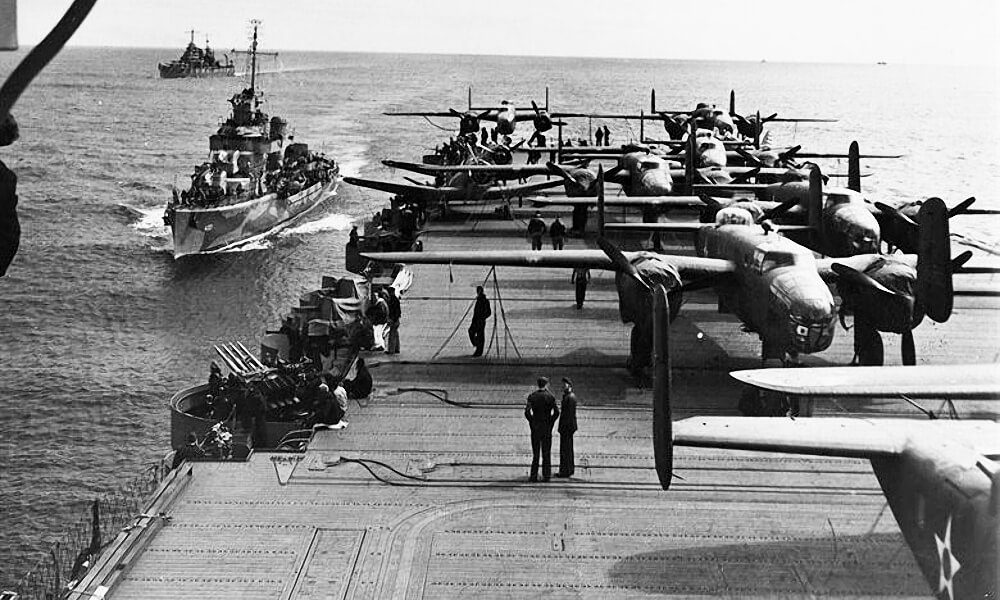
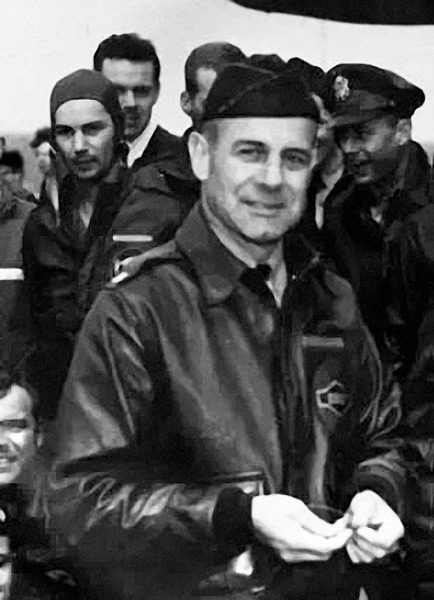

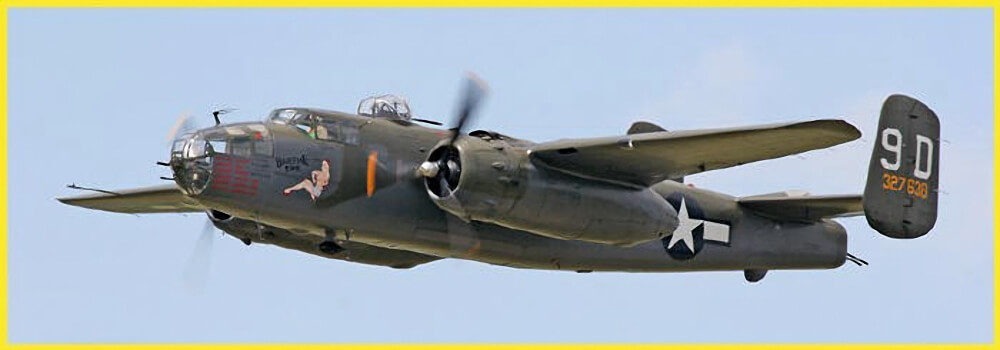
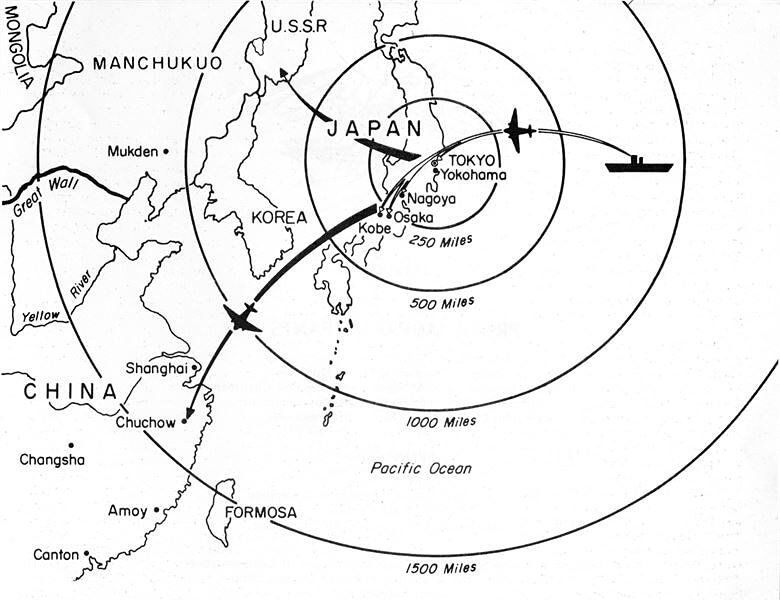
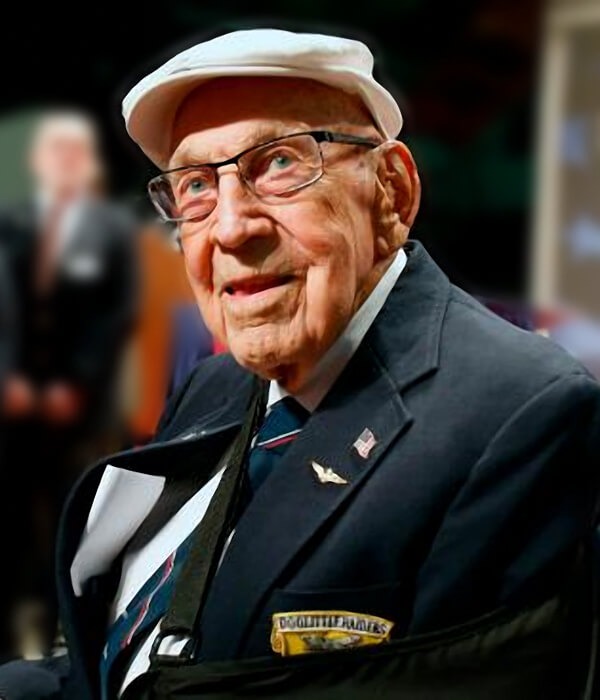


Thank you for the back ground and history of Doolittle's Raiders, i thought about this story coming out the whole time i was watching the movie Pearl Harbor.
Thank you, Benjamin the Maverick!